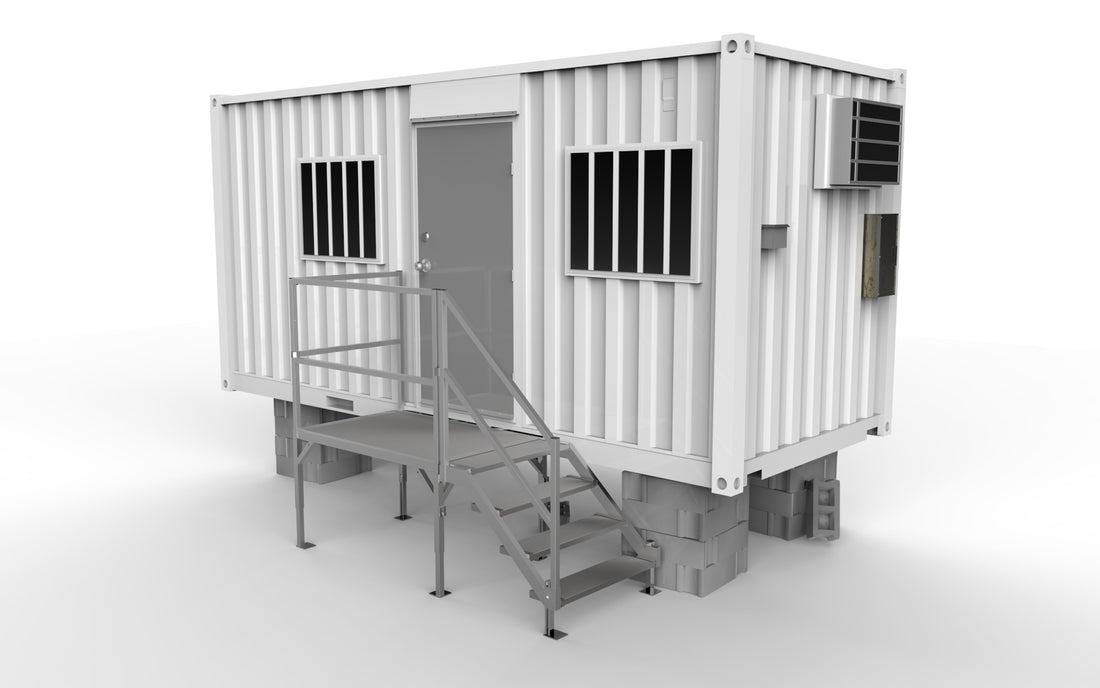ADA stairs are those used for the public, while OSHA stairs are those that are used for the workplace. While they might be similar, there are some key differences in their design that are important to know so your business is compliant with these organizations.
ADA requires that you provide an accessible route to the entrance of your business and ensure that any interior spaces are designed with accessibility in mind. This includes wide doorways, ramps, and grab bars as needed. Additionally, ADA requires signage stating specific requirements such as wheelchair access and other forms of assistance.
On the other hand, OSHA focuses on the safety aspects of a workplace. These aspects include proper ventilation systems, fire extinguishers, smoke detectors and exit signs that meet certain standards. It also requires employees to be trained on proper safety procedures and protocols, so they know how to respond if something were to go wrong.
Difference Between ADA and OSHA
ADA stands for the Americans with Disabilities Act of 1990, which is a federal law designed to protect people with disabilities from discrimination in all areas of life. The ADA prohibits employers and other organizations from discriminating against people on the basis of disability in employment decisions, public accommodations, transportation services, and communication access. It also requires businesses to make reasonable modifications to accommodate individuals with disabilities.
OSHA stands for Occupational Safety and Health Administration and is an agency within the U.S. Department of Labor that enforces standards for workplace safety and health. OSHA regulations cover a wide range of topics including hazardous materials, emergency planning, recordkeeping requirements, worker training requirements, and much more. OSHA provides safety information as well as enforcement inspections to ensure adherence to the standards. Employers are legally obligated to comply with OSHA regulations in order to protect the safety and health of their employees. Violations of these standards can result in substantial fines or other penalties.
What Are the Key Regulations for ADA-Compliant Stairs?
According to ADA guidelines, all stairs should have uniform riser heights and tread widths; stair treads should be no less than 11” wide (measured from riser to riser); open risers are not permitted; handrail gripping surface should be mounted between 34” and 38” with railing height above the nosing of the stair; and the ends of the handrails should be rounded or returned smoothly to the floor.
What Are the Key Regulations for OSHA-Compliant Stairs?
According to OSHA guidelines, the minimum dimension for landings is 22” wide by 30” deep; all stairs with four or more risers must have handrails and guardrails; variations in riser height or stair tread depth must not exceed .25” in any stairway; and stairways must be installed between 30 and 50 degrees from the horizontal.
Whether you need ADA stairs for public access or OSHA stairs for workplace safety, EZ-ACCESS has the solution. We offer a range of products that meet both ADA and OSHA standards, so you can be sure your stairs comply with all applicable regulations. Our products are designed to provide safe, reliable access while also meeting code requirements. Contact us today to discuss which product best meets your needs!
ADA Stairs vs. OSHA Stairs
ADA stairs and OSHA stairs refer to two different sets of standards for stairways. The ADA, or Americans with Disabilities Act, is a set of guidelines that ensure the safety and accessibility needs of individuals with disabilities are met in public places. OSHA stands for the Occupational Safety and Health Administration, which sets guidelines related to workplace safety.
One of the biggest differences between ADA stairs and OSHA stairs relates to their handrails. ADA-compliant handrails must be continuous along both sides of the stairway, while OSHA only requires a single handrail for stairways with four or more risers. Additionally, the height requirements for ADA handrails differ from those of an OSHA stair. Under ADA guidelines, the top of a handrail must be between 34 and 38 inches above the stair nose, while OSHA requires a height range of 30 to 36 inches.
Another difference between ADA stairs and OSHA stairs is that ADA stairs may require additional features such as level landings at the top and bottom of the stairway, while these are not required by OSHA standards. Additionally, certain materials and finishes may also be required by ADA guidelines to ensure accessibility for individuals with mobility issues. For example, stairs should have slip-resistant surfaces so those with vision impairments and those who use wheelchairs can safely navigate them.
While there might be some overlap between ADA and OSHA guidelines when it comes to workplace safety, they are two different and distinct sets of requirements that must be followed in order to ensure compliance with both organizations. It is important to properly consider all aspects of installation when it comes to ADA and OSHA stairs so your business can remain safe and compliant.
Overall, both ADA stairs and OSHA stairs are designed for safety and accessibility purposes; however, the requirements for each set of standards differ. It is important to be aware of the differences and make sure that your stairs comply with both ADA and OSHA regulations. EZ-ACCESS has a range of products that meet both ADA and OSHA standards, so you can easily ensure your stairs are compliant with all applicable regulations.

